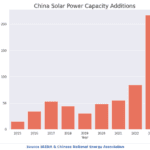The energy transition is driven by the goal to decarbonize the energy used for transportation, buildings, and industry. Lacking a low-cost way of removing greenhouse gases from the air, the solution is to electrify as much as possible with clean power. In 1990, coal accounted for 54.6 percent of the total electricity generated in the US. This number steadily decreased over the years, to less than 17 percent in 2023. While the electric grid decarbonization has already made progress, the proportion of power generated by renewables must grow substantially to achieve clean power.
There are many multi-faceted management decisions and operational plans that need to be made by RTOs (Regional Transmission Operators), ISOs (Independent System Operators), regulators, and utilities of all sizes. There are financial and reliability benefits that are driving “behind the meter” (BTM) generation and storage which is adding to the complexity. Municipal power companies, rural cooperatives, commercial, agricultural, and residential customers are increasingly generating power and interacting with the larger power grid in new ways. There are many opportunities and risks for suppliers of hardware, software, and services to the electric power industry.
The next decade will see solar and wind generation as the dominant source of new power, further displacing dispatchable fossil power plants. The US installed about 33 GW of Solar PV in 2023 which is up from 21GW in 2022, but the Chinese PV installations were a staggering 216.9 GW eclipsing its record of 87.4 GW from the previous year as seen in the chart below. In a single year, China installed more PV power than the US has installed in its entire history. Grid and transmission operators in the US have a very large interconnection queue as they plan how to integrate renewable power and FERC order 2023 is pushing to reduce this queue which can delay interconnections by up to five years. One might ask how China managed the integration of this much power in a single year.
Technologies such as biofuels, geothermal, and tidal power will play a relatively smaller role. In the short term the grid will retain the existing hydro and nuclear base load, which will provide about 25 percent of the grid power. Wind and solar will eventually provide nearly half of all US grid power by 2050.
This is a complex problem, and solutions will vary by geographical region, weather conditions, the specific characteristics of the local and regional generation mix, and by the anticipated new electric loads such as EV charging, heat pumps, and eventually green hydrogen production at scale. The key grid operator themes at ISO New England below resemble issues across the US, Europe, and Asia:
Managing Risk
Existing reliability risks during extreme weather will be amplified by increasing restrictions on carbon emissions and a prevalence of limited energy resources (gas/renewables). There are limits to how much risk can be mitigated through the market. New England is learning from the response to extreme weather events in other regions.
Transmission Expansion
More transmission will be needed to interconnect and deliver large scale renewable energy to meet state policy goals (separate from reliability needs).
Adapting the Market Design
Electricity markets are adapting to encourage energy storage, clean peak power, demand response, with changing circumstances and policy objectives.
Planners must model the weather, utility generation assets, behind the meter solar generation and storage, new customer load profiles due to EV charging, new heat pump HVAC systems, the load from green hydrogen electrolyzers, how smart meters are evolving, how customers will behave with time-of-day pricing and how effective aggregators forming virtual power plants will be to achieve useful levels of demand response.
Modeling weather and human behavior has uncertainty and risks. Renewables will create significant gaps that must be predicted, and multiple measures must be put into place to ensure these gaps are filled and the grid is reliable as the energy transition progresses. In the short-term gas peaking plants and to a lesser extent coal fired plants are filling these gaps.
This means grid planners must model and simulate a progression of scenarios and each scenario will have a range of actions to reduce risks. Understanding the characteristics of generation, energy storage, the electrical distribution system, regulations, and the changing load profiles is essential to develop plans that will keep power costs low and power reliability high. This report will provide an update on these various technologies and the solutions that utilities have already deployed, are planning to deploy, and the technical and administrative obstacles ahead.
The post Achieving Grid Reliability with Renewables appeared first on Logistics Viewpoints.
